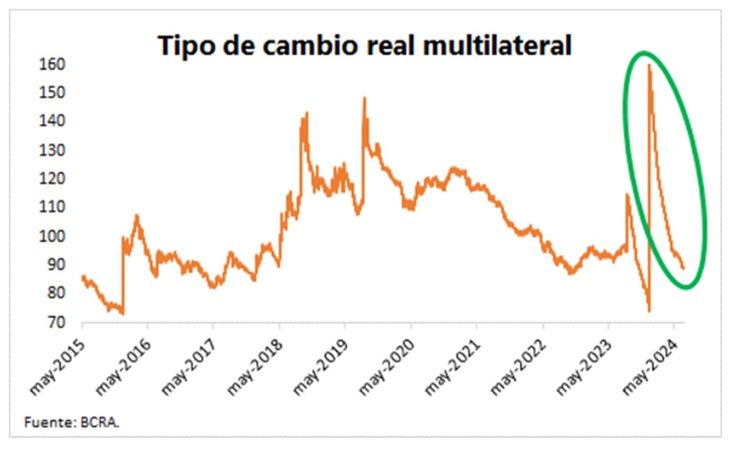According to official data, The primary surplus accumulated in the year reached 1 point of the Gross Domestic Product (GDP) , while the financial one was approximately 0.4 points. In terms of spending, it marked a real drop of almost 30%, with items that continue to be practically zero (such as transfers to provinces and public works) and others that have been “chainsaw victims“, nothing new.
- fiscal surplus and adjustment: The Ministry of Economy celebrated a fiscal surplus in May, with a drop in real spending of 30%.
- retirement spending: Spending on retirement and pensions, historically significant, fell by 16% in real terms, although the decline is slowing.
- extraordinary collection: May showed growth in collection thanks to extraordinary taxes, but, without them, the surplus would not cover the interest.
- fiscal adjustment limits: The spending cut is showing its limits, with difficulties in keeping it under control and economic activity in decline.
- monetary and exchange rate policy: The success of fiscal policy and inflation control depends on the strength of the fiscal surplus and exchange rate policy.
In particular, maintains the Isepci, “We must begin to closely follow the behavior of spending on retirement and pensions, historically representative of a third of the total“. In May, this drop, which reached -16% in real terms, has been slowing down compared to previous months. “This is due to the different mobility formulas that governed the retirement benefitsnone has managed to overcome the difficulty of updating itself with a lag”, such that at times when inflation soars, its real fall is accentuated, the report highlights.
Retirements.jpeg
That is to say, “that the old formula helped the Milei government to liquefy this important state expense in its first months of government“However, if today we begin to observe less decline for this concept, it is because the impact of the jump in prices from January-February-March is being left behind.
Assuming that the project promoted by the entire opposition that today has half a sanction from the Chamber of Deputies was not successful, the interannual variations for the rest of the year should converge to the difference of 8.1% that was lost in the connection with the formula imposed via DNU by the president. In summary, continuing to liquidate the already hit retirements, finds limits for the second half of the year.
About the collection
On the collection side, May – unlike what has been happening – resulted in growth in relation to inflation. In particular, “it helped that this is the month in which the Income Tax is paid by companies that close their balance sheet in December”, which, due to the devaluation at the end of the year, they had to allocate a significant holding result in their income statements.
In summary, the document concludes, “without this extraordinary push and if we assumed a collection in line with the average for the first months of the year, it would have deepened its downward path and The surplus would not have been sufficient to cover the interest payment for the period. Inalienable flag of the present economic management“.
In addition to the aforementioned case of retirements, the Government is beginning to find it difficult to keep expenses on track, as happened at the beginning of the year, for the implicit grace period that he had at the beginning of the Government. At the same time, the income, beyond exceptional items (in June, for example, the collection of the PAIS tax will be imputed due to payments of profits and dividends), would not reflect a substantial improvement due to the fall in economic activity.
“The challenges of fiscal balance via adjustment with recession become more complicated, even more so if the points of the fiscal package rejected by the Senate are sustained: reimposition of profits and modifications in personal assets,” the report highlights.
“The fate of the fiscal balance is the fate of the program in execution”
The theoretical line of President Javier Milei says that the monetary issue It is the only cause of inflation, therefore, the end of the fiscal deficit, which implies the end of monetary financing from the Central Bank (BCRA) to the Treasury, is the recipe to end inflation..
“In this sense, they present the downward path of the price index, as a consequence of ending the fiscal deficit, freeing the oligopolistic goods market from the fate of price behavior,” the document indicates. This is despite the fact that the Ministry of Economy is more pragmatic than this thesis, considering cases such as the judicialization of increases in prepaid payments (which DNU 70 itself released), or the extension of public service rate adjustments, to help the monthly inflation data.
Following the sequential line in which the fate of inflation is the fate of the fiscal resultis that the exchange market appears as a second element.
WhatsApp Image 2024-06-24 at 12.39.41.jpeg

“If inflation is not doing well and does not meet the reduction objectives, Under this fixed 2% monthly devaluation scheme, doubts about the competitiveness of the exchange rate will become increasingly greater.“, another open front for the Government. Until monthly inflation does not match the devaluation rate, the currency continues to appreciate, as observed in the multilateral real exchange rate indexl.
“Or, recognizing the need to re-sincerize the value of the dollar, with all the consequences that this implies, and about which the economic team has been showing resistance,” he adds.
In summary, the text concludes that “The success of the fiscal policy, which would guarantee success in lowering inflation, is, consequently, the success of the established exchange rate scheme.“.
What would happen if any of these gears don’t fit?
“The third element, which has recently been subject to fiscal balance, is monetary policy, in its eagerness to turn off emission engines. Since mid-May, the Treasury re-released capitalizable fixed-rate debt instruments (Lecap) in significant amounts to encourage migration from placements in liabilities from the BCRA to the Treasury“says the Isepci.
“Offering, in this way, an option to the passive pass of the BCRA and thus encouraged, with a reward for better performance (monthly rate 4.25% for the Treasury vs. 3.3% for the pass). This migration was reflected since May and Luis Caputo himself encouraged banks to consider the Lecap rate as the reference for monetary policy in the arbitration of the financial system. In this case, the necessary condition for this migration to continue along this path is the strength of the Treasury’s fiscal surplus“, Add.
To the extent that this is in doubt, no matter how much better remuneration the Lecap implies compared to the pass, local creditors would avoid the option that represents a greater credit risk to manage their liquidity. In summary, We are facing a fiscal surplus – the wire that binds all the rest of the economic policy in execution (exchange and monetary) – that is showing serious difficulties in sustaining itself. in the months to come. It is time to start asking what will happen to Milei’s plans, if fiscal performance deepens these weaknesses, the document concludes.
Source: Ambito




